The 1977 Fiat 128, a small Italian hatchback, arrived in a world grappling with fuel shortages and a desire for economical transportation. It became an instant success, capturing hearts with its nimble handling, efficient engine, and stylish design. This car epitomized the spirit of the 1970s, where practicality and affordability were paramount.
The 128’s popularity wasn’t just due to its practicality. Its innovative engineering, including front-wheel drive and independent suspension, set it apart from its contemporaries. The 128 offered a unique blend of performance and handling, making it a joy to drive on winding roads and urban streets alike.
Introduction
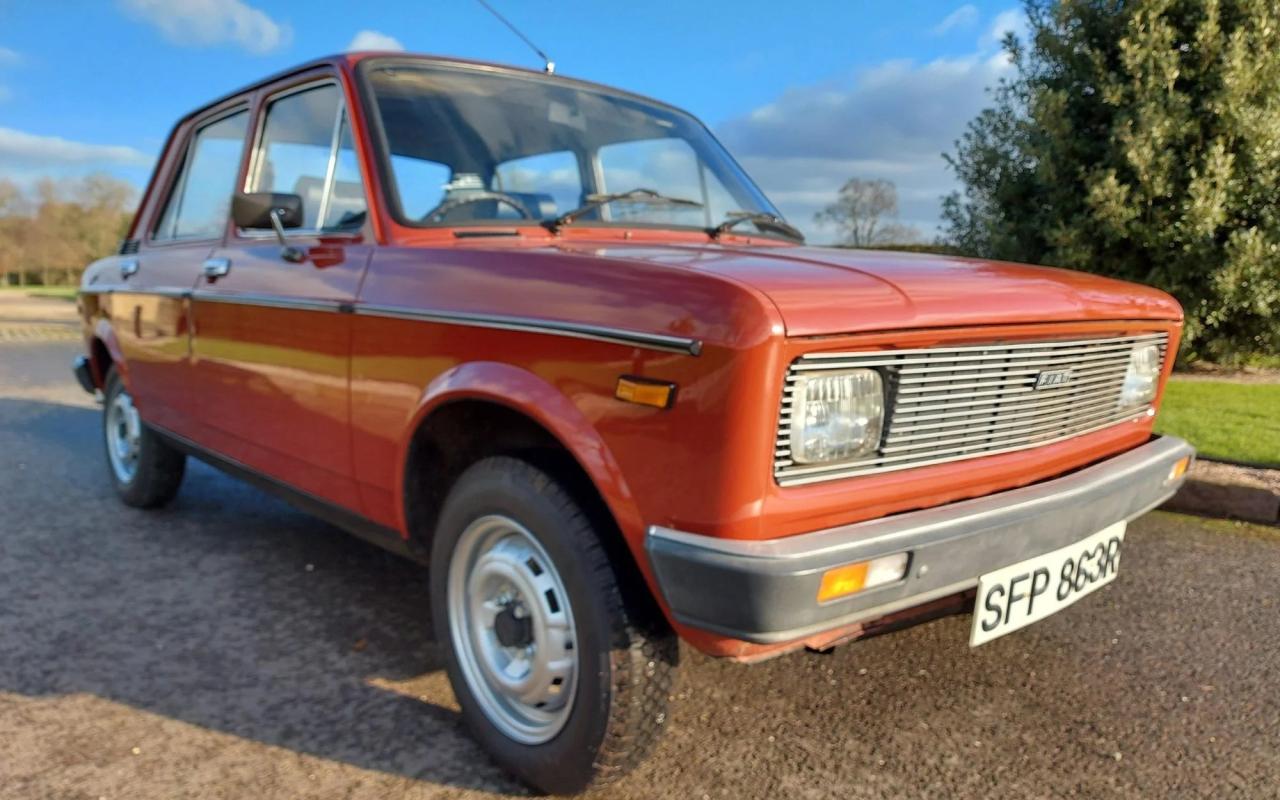
The Fiat 128, a compact car produced by the Italian automaker Fiat from 1969 to 1985, holds a significant place in automotive history. Introduced in 1969, it revolutionized the small car segment with its innovative design and practicality. The Fiat 128 was a pioneering example of front-wheel drive in a small car, a feature that would become increasingly common in the following decades.
It also featured a unique rear suspension system that provided excellent handling and ride comfort.
The Fiat 128’s Impact on the Market
The Fiat 128 was a huge success in the European market, winning the prestigious “Car of the Year” award in 1970. It quickly became a popular choice for families and individuals seeking an affordable and reliable car. The 128’s popularity was not limited to Europe, as it was also sold in several other markets around the world, including North America and Australia.
Reasons for the Fiat 128’s Popularity
The Fiat 128’s popularity in the 1970s can be attributed to several factors.
- Fuel Efficiency:The 128’s compact size and efficient engines made it a very fuel-efficient car, a significant advantage in the era of rising fuel prices.
- Practicality:The 128 offered a surprisingly spacious interior for its size, with a large trunk and comfortable seating for four passengers.
- Driving Dynamics:The 128’s front-wheel drive layout and innovative rear suspension system provided excellent handling and ride comfort.
- Reliability:The 128 was known for its reliability, which contributed to its long-term popularity.
Design and Engineering
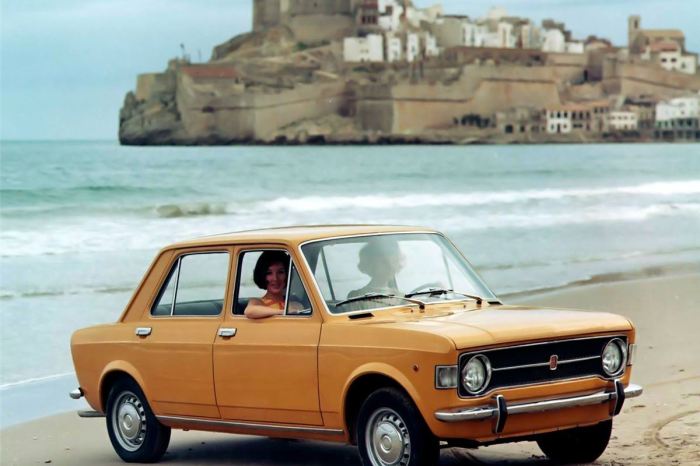
The 1977 Fiat 128 was a revolutionary car for its time, blending innovative engineering with a stylish design that was both practical and appealing. This compact hatchback was a departure from the traditional Fiat offerings, and it quickly gained popularity for its handling, fuel efficiency, and overall value.
Exterior Styling
The Fiat 128’s exterior design was a blend of practicality and modern aesthetics. Its boxy shape, with its sharp lines and upright stance, maximized interior space while still offering a sporty look. The large windows provided excellent visibility, and the front grille featured a distinctive honeycomb pattern.
The rear hatch design, with its integrated spoiler, was both functional and stylish.
Interior Layout
The 128’s interior was surprisingly spacious for a car of its size. The dashboard was clean and functional, with easy-to-read gauges and well-placed controls. The seats were comfortable and offered good support, while the rear bench provided ample space for passengers.
The 1977 Fiat 128, a compact hatchback, was a popular choice for its nimble handling and fuel efficiency. While it lacked the power of its larger sibling, the 1981 Fiat 131 , it made up for it with its affordability and practicality.
The 128’s simple design and reliable performance made it a favorite among drivers seeking a no-frills, economical car.
The large cargo area could accommodate a significant amount of luggage, making the 128 a practical choice for families or weekend trips.
Engine Specifications
The 1977 Fiat 128 was offered with a range of engines, but the most common was the 1.1-liter four-cylinder unit. This engine produced 55 horsepower and delivered a respectable level of performance, while also being surprisingly fuel-efficient. The 128’s engine was known for its smooth operation and responsive throttle, making it a pleasant car to drive.
Engine Specifications
The 1977 Fiat 128 was offered with a range of engines, but the most common was the 1.1-liter four-cylinder unit. This engine produced 55 horsepower and delivered a respectable level of performance, while also being surprisingly fuel-efficient. The 128’s engine was known for its smooth operation and responsive throttle, making it a pleasant car to drive.
Front-Wheel Drive System
The 128 was one of the first mass-produced cars to feature a front-wheel drive system. This configuration offered several advantages, including improved traction, especially in slippery conditions, and a more compact drivetrain, which allowed for a more spacious interior. The front-wheel drive layout also contributed to the 128’s excellent handling characteristics, making it a joy to drive on winding roads.
Independent Suspension
The 1977 Fiat 128 featured an independent suspension system, which provided a comfortable and controlled ride. The front suspension consisted of MacPherson struts, while the rear used a trailing arm setup. This configuration ensured a smooth ride and good handling, even on rough roads.
Performance and Handling
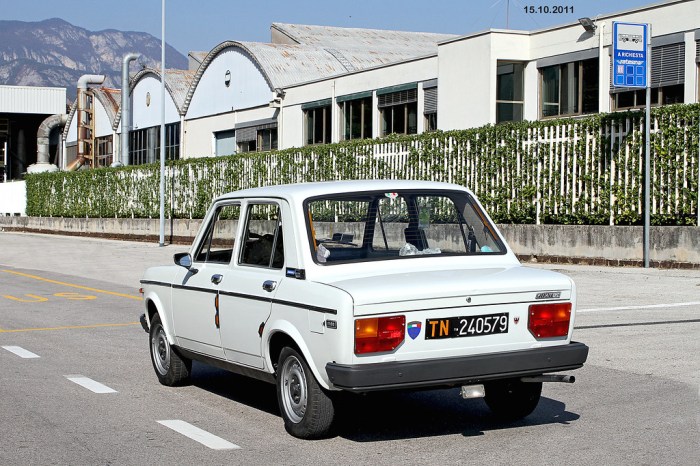
The 1977 Fiat 128 was a small car with a surprisingly spirited performance, thanks to its lightweight design and efficient engine. While not a speed demon, it offered a lively driving experience that was appreciated by many owners.
Acceleration and Top Speed
The 1977 Fiat 128 was available with a variety of engine options, but the most common was the 1.1-liter four-cylinder engine. This engine produced around 60 horsepower, which was enough to propel the car to a top speed of around 90 mph.
Acceleration was adequate, with the car taking about 13 seconds to reach 60 mph. These figures were competitive with other small cars of the time, like the Volkswagen Beetle and the Renault 5.
Handling and Driving Experience
The Fiat 128 was known for its nimble handling. Its relatively short wheelbase and responsive steering made it easy to maneuver in tight spaces. The car also had a good amount of grip, thanks to its independent suspension system.
This combination of agility and stability made the 128 a fun car to drive on winding roads. The car’s suspension, while firm, provided a comfortable ride on most surfaces. The 128’s light weight and small size also made it easy to park and maneuver in urban environments.
Design Contributions to Agility
The Fiat 128’s design played a key role in its agility and responsiveness. Its front-wheel drive layout provided excellent traction, especially in wet conditions. The car’s lightweight construction also contributed to its quick acceleration and nimble handling. The small size of the car meant that it could easily navigate tight corners and congested city streets.
Interior and Features
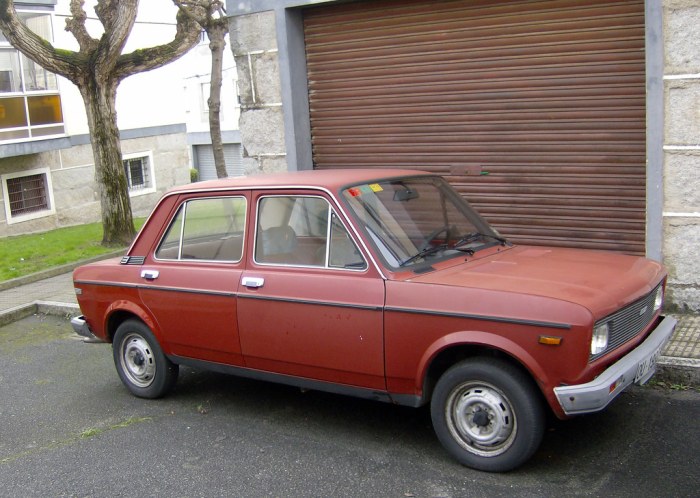
The 1977 Fiat 128’s interior, while modest, was designed with practicality and functionality in mind. Its simple design and straightforward layout aimed to provide a comfortable and user-friendly driving experience.
Interior Design and Materials, 1977 Fiat 128
The interior of the Fiat 128 featured a simple and functional design, with durable materials that prioritized practicality over luxury. The dashboard was straightforward and easy to navigate, with clear instrumentation. The seats, though basic, offered adequate comfort for daily driving.
Vinyl upholstery was standard, while cloth upholstery was available as an option. The overall design emphasized functionality and affordability, reflecting the car’s target market of budget-conscious drivers.
Available Features
The 1977 Fiat 128 offered a range of features that aimed to enhance both comfort and convenience. The standard features included:
- Seating Capacity:The Fiat 128 could comfortably seat four passengers. The front seats were adjustable for height and recline, offering a reasonable amount of comfort. The rear seats were relatively small but could accommodate two adults for short journeys.
- Ventilation:The car featured a basic ventilation system with manual controls. It provided adequate airflow for the cabin, but air conditioning was not available.
- Storage:The Fiat 128 included a glove box, a small center console, and door pockets for storing small items. The trunk offered sufficient space for luggage, especially for a car of its size.
Practicality and Livability
The Fiat 128 was designed to be a practical and livable car for daily driving. Its compact size made it easy to maneuver in tight spaces and park in crowded areas. The car’s fuel efficiency was another significant advantage, making it an economical choice for commuting and city driving.
The interior, while basic, offered a comfortable and functional space for both the driver and passengers. The car’s simple design and straightforward controls contributed to its ease of use, making it an ideal choice for drivers of all experience levels.
Legacy and Impact
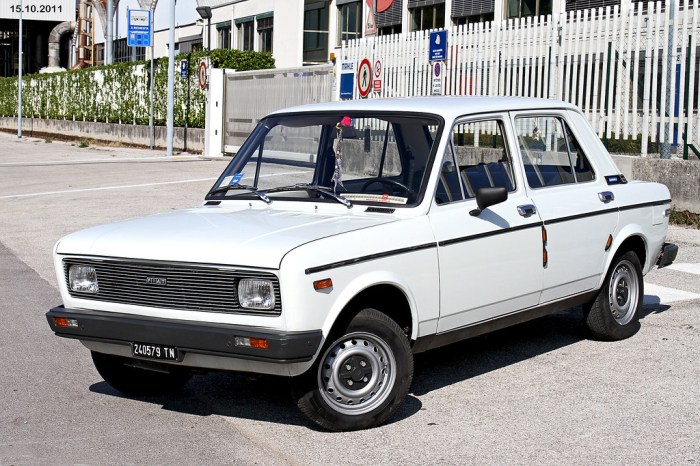
The Fiat 128 left a lasting mark on the automotive landscape, influencing design trends and establishing new benchmarks for small-car engineering. Its innovative features and fuel-efficient design helped shape the future of automotive development, particularly in the burgeoning market for compact cars.
Influence on Small Car Design
The Fiat 128’s impact on the development of small, fuel-efficient cars is undeniable. Its front-wheel drive layout, compact dimensions, and lightweight construction became hallmarks of the burgeoning “supermini” segment. This innovative approach to small-car design paved the way for a new generation of fuel-efficient and practical vehicles.
The Fiat 128’s success demonstrated that small cars could be both economical and engaging to drive, challenging the perception that smaller vehicles were inherently less desirable.
Collectibility and Value: 1977 Fiat 128
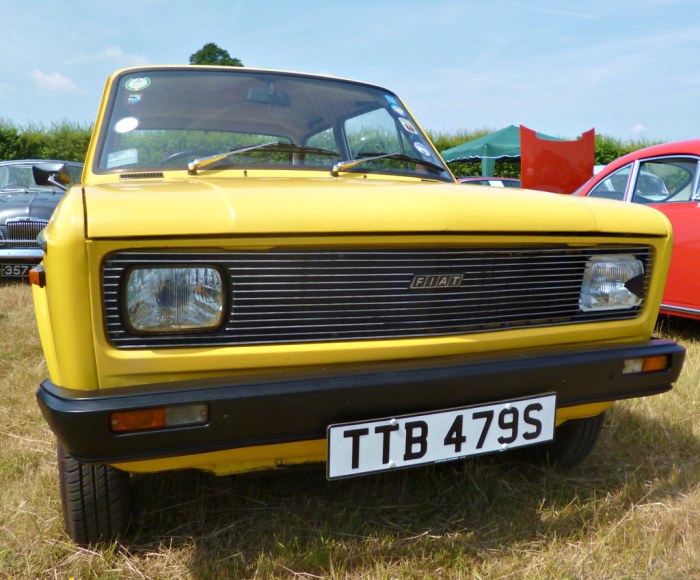
The 1977 Fiat 128, a compact car known for its innovative design and nimble handling, has gained a devoted following among enthusiasts and collectors. While its production run ended in the early 1980s, the 128 continues to hold a special place in automotive history, making it a sought-after classic for those who appreciate its unique blend of style and practicality.
Market Value and Condition
The current market value of a 1977 Fiat 128 varies significantly depending on its condition, originality, and overall desirability. A well-preserved, original example in excellent condition can fetch a premium price, while a car requiring restoration or with significant modifications may command a lower value.
The 1977 Fiat 128 was a popular choice for its compact size and fuel efficiency, especially in Europe. While it was known for its front-wheel drive layout, its predecessor, the 1972 Fiat 850 , was a rear-wheel drive car, highlighting the evolving design philosophies of the Italian automaker.
The 128’s sleek styling and advanced features made it a compelling competitor in the small car segment of the era.
Here’s a general overview of price ranges:
- Excellent Condition:$5,000 – $10,000 or more. These cars are typically unrestored or lightly restored, with original paint, interior, and mechanical components in good working order.
- Good Condition:$2,000 – $5,000. These cars may have some cosmetic flaws or minor mechanical issues, but are generally roadworthy and presentable.
- Fair Condition:$1,000 – $2,000. These cars require significant restoration work, and may have mechanical problems or missing parts. They are often considered projects for dedicated enthusiasts.
- Parts Cars:$500 – $1,000. These cars are typically beyond repair and are primarily used for sourcing parts for other 128s.
Factors Contributing to Collectibility
Several factors contribute to the 1977 Fiat 128’s collectibility, making it a desirable classic for enthusiasts:
- Unique Design:The 128’s distinctive styling, with its compact dimensions, sloping roofline, and large rear window, set it apart from other cars of its era. Its innovative rear-mounted engine and front-wheel drive layout were also groundbreaking for its time.
- Driving Experience:The 128 is known for its nimble handling and engaging driving experience. Its lightweight construction and responsive engine make it a fun car to drive on winding roads.
- Historical Significance:The 128 was a significant car in Fiat’s history, and its success helped to establish the Italian automaker’s reputation for innovative and stylish small cars. It also played a role in popularizing the concept of the compact hatchback in the United States.
The 1977 Fiat 128, a compact car with a unique rear-engine layout, was a departure from the more traditional Fiat models of the time. Its design drew inspiration from the 1968 Fiat 500 , another iconic Italian car known for its compact size and affordability.
The 128, however, offered a more spacious interior and a more powerful engine, making it a popular choice for families and commuters alike.
- Rarity:While the 128 was produced in significant numbers, finding well-preserved examples today can be challenging, especially in the United States. This rarity adds to the car’s desirability among collectors.
- Growing Popularity:In recent years, the 1977 Fiat 128 has experienced a resurgence in popularity among classic car enthusiasts. This growing interest is driving up prices for desirable examples, making it a potentially lucrative investment for those who are willing to wait for the right car.
Restoration Process and Challenges
Restoring a 1977 Fiat 128 can be a rewarding but challenging experience. Enthusiasts should be prepared for the following:
- Availability of Parts:While some parts are still readily available, finding certain components, especially body panels and interior trim, can be difficult. This may require searching online marketplaces, specialty suppliers, or even resorting to fabrication.
- Mechanical Complexity:The 128’s rear-mounted engine and front-wheel drive layout present unique challenges for mechanics. Finding skilled technicians familiar with these systems can be important.
- Rust:As with many cars of this era, rust can be a major issue. Thorough inspection and potential bodywork are often necessary for a successful restoration.
- Time and Expense:Restoring a 128 to a high standard can be a time-consuming and expensive process. Enthusiasts should be prepared to invest significant time and resources to achieve their desired results.
Comparisons and Alternatives
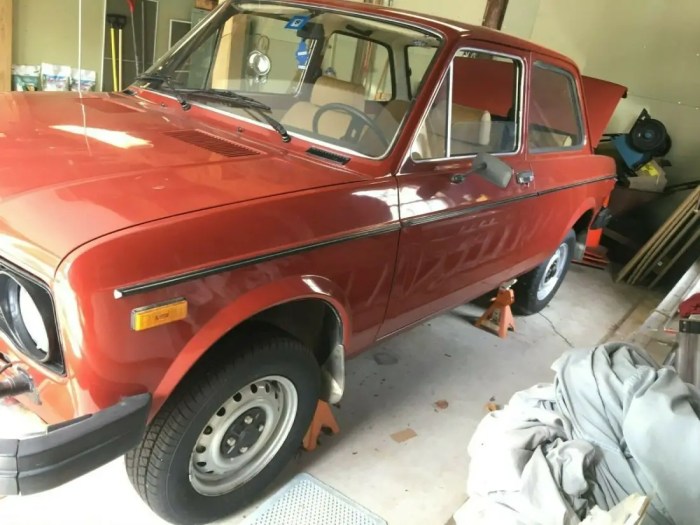
The 1977 Fiat 128, despite its innovative design and impressive handling, faced stiff competition in the European and international markets. Several other vehicles, both from established manufacturers and up-and-coming brands, offered similar features and aimed for the same customer base.
Understanding the strengths and weaknesses of the 128 in relation to these competitors helps paint a clearer picture of its place in automotive history.
Comparison to Contemporary Rivals
The Fiat 128’s primary rivals included the Volkswagen Golf, the Renault 5, the Ford Fiesta, and the Opel Kadett. These cars, all launched in the mid-to-late 1970s, shared similar characteristics: compact dimensions, front-wheel drive, and fuel-efficient engines. However, each car offered its own unique strengths and weaknesses.
- The Volkswagen Golfwas known for its rugged build quality, spacious interior, and reliable engines. It was, however, somewhat heavier than the 128, which impacted its handling and fuel efficiency.
- The Renault 5was a more affordable and stylish option, but it lacked the 128’s advanced suspension and handling.
- The Ford Fiestawas a strong competitor in terms of price and practicality, but its styling was less distinctive and its driving experience less engaging than the 128’s.
- The Opel Kadettoffered a good balance of performance and handling, but it was not as innovative or as fuel-efficient as the 128.
Strengths and Weaknesses of the 128
The Fiat 128’s strengths included its innovative front-wheel drive layout, its nimble handling, its fuel efficiency, and its stylish design. However, it also had some weaknesses. Its build quality was not as robust as some of its rivals, and its interior space was somewhat cramped.
The 128’s engine, while fuel-efficient, could also be underpowered at times.
Popular Vehicles in the Same Segment
In addition to the aforementioned competitors, several other vehicles were popular in the small car segment during the late 1970s. These included the Datsun 120Y, the Toyota Corolla, the Honda Civic, and the BMC Mini. These cars offered a range of features and price points, catering to a diverse customer base.
Visual Representation
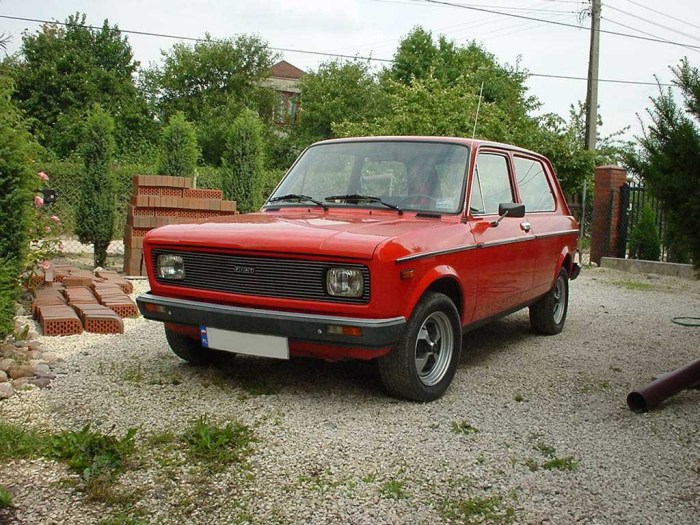
The 1977 Fiat 128 was available in a variety of trim levels, each offering a unique combination of features and styling. This visual representation helps to illustrate the diverse options available to buyers at the time.
1977 Fiat 128 Models
This table showcases the various 1977 Fiat 128 models, highlighting their unique features and visual characteristics.
| Model Name | Engine | Features | Image Description |
|---|---|---|---|
| Fiat 128 1100 | 1.1L 4-cylinder | Standard features, basic trim | The Fiat 128 1100 is a compact hatchback with a simple, functional design. It is painted in a light blue color, typical of the era. The exterior features black bumpers and trim, and the wheels are adorned with hubcaps. The interior is spartan but functional, with black vinyl upholstery and a basic dashboard. |
| Fiat 128 1300 | 1.3L 4-cylinder | Upgraded engine, additional features | The Fiat 128 1300 is distinguished by its larger engine, offering more power. The exterior features a more sophisticated look with chrome accents on the bumpers and trim. The color is a deep red, adding a touch of elegance. The interior features a more refined design with fabric upholstery and a slightly more elaborate dashboard. |
| Fiat 128 Rally | 1.3L 4-cylinder | Sporty features, performance-oriented | The Fiat 128 Rally is designed for performance. The exterior features a more aggressive look with black and red stripes on the sides. The wheels are replaced with larger, alloy wheels for better grip. The interior features sport seats and a more functional dashboard. The color is a bold red, highlighting its sporty nature. |
| Fiat 128 3-Door | 1.1L 4-cylinder | Compact design, ideal for city driving | The Fiat 128 3-Door is a smaller, more compact version of the 128. The exterior features a three-door design, offering easy access to the rear seats. The color is a light yellow, adding a touch of brightness. The interior features a simple design with black vinyl upholstery. |
Last Point
The 1977 Fiat 128 left an indelible mark on automotive history. It paved the way for a new generation of small, fuel-efficient cars that prioritize driving pleasure and practicality. While its production ended in 1983, its legacy continues to inspire car enthusiasts and collectors alike.
The 128 remains a testament to Italian ingenuity and a symbol of a bygone era, reminding us that even in times of scarcity, there’s room for style and driving excitement.